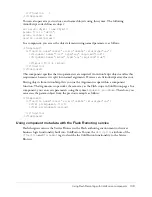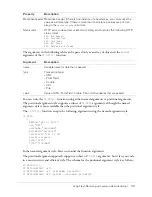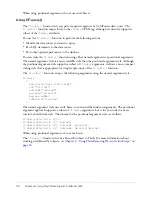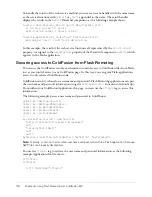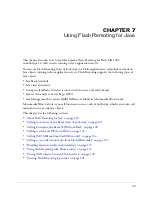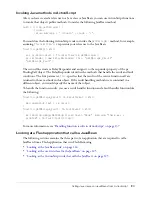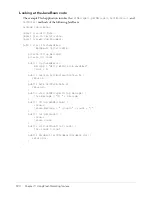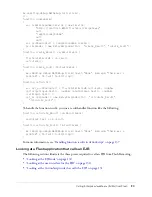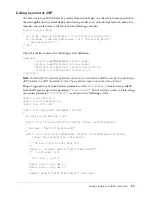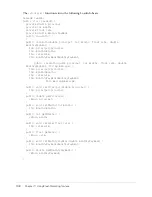
Calling Java classes or JavaBeans from ActionScript
123
Invoking Java methods in ActionScript
After you have created a reference to a Java class or JavaBean, you can use ActionScript functions
to invoke that object’s public methods. Consider the following JavaBean method:
public String getMessage() {
count++;
return m " (count=" + count + ")";
}
You could use the following ActionScript code to invoke the
getMessage()
method, for example,
assuming
flashtestService
represents your reference to the JavaBean:
function getMsg():Void
{
var pc:PendingCall = flashtestService.getMessage();
pc.responder = new RelayResponder( this, "getMessage_Result",
"getMessage_Fault");
}
The second line creates a RelayResponder and assigns it to the responder property of the pc
PendingCall object. The RelayResponder identifies the methods that handle the result and fault
conditions. The first parameter,
this
, specifies that the results of the service function call are
returned to those methods in this object. If the result handling methods were contained in a
different object, you would specify the name of that object.
To handle the function results, you use a result handler function and a fault handler function like
the following:
function getMessage_Result( re:ResultEvent ):Void
{
messageOutput.text = re.result;
}
function getMessage_Fault( fe:FaultEvent ):Void
{
mx.remoting.debug.NetDebug.trace({level:"None", message:"There was a
problem" + fe.fault.faultstring});
}
For more information, see
“Handling function results in ActionScript” on page 137
.
Looking at a Flash application that calls a JavaBean
The following sections examine the three parts of an application that are required to call a
JavaBean from a Flash application that uses Flash Remoting:
•
“Looking at the JavaBean code” on page 124
•
“Looking at the user interface for the JavaBean” on page 125
•
“Looking at the ActionScript code that calls the JavaBean” on page 125

